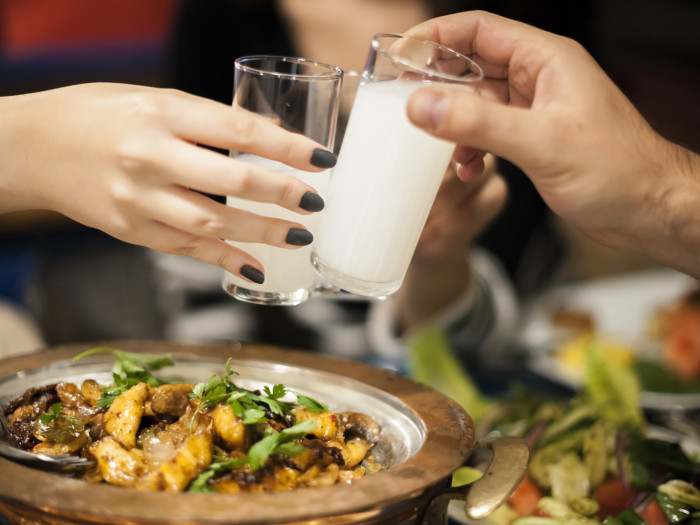Raki may not be well known to those who don’t consider themselves “adventurous” drinkers, but if you’ve ever traveled through certain parts of Europe, you may have come across this exotic type of alcohol.
What is Raki?
According to the Turkish Cultural Foundation, raki is an alcoholic drink that is popular in Turkey [1] and the Baltic region, primarily as an aperitif. It is made by distilling a mash of grape remains, known as grape pomace, twice. This alcohol is made from either raisins or fresh grapes, although varieties that are made with fresh grapes are considered to be of a higher quality and are often higher in alcohol content. After distilling, the drink is flavored with aniseed, giving it a strong herbal licorice taste. On average, it has an ABV of around 37-45%.
How to Drink Raki?
This liquor is almost never served without water being added, usually an ice cube or two. This turns the liquor a milky white, giving it the nickname ‘lion’s milk’, as per Erdir Zat, writer of the book ‘Raki Modern And Unconventional‘. [2]

Raki, the Turkish national drink, is a clear brandy made of distilled grapes, flavored with anise. Photo Credit: Shutterstock
How to Make?
To make this alcohol at home, you will need to use a copper alembic still. Please be advised that excessive alcohol consumption can cause fatal diseases. So if you are planning to make and consume raki, do it in moderation. Keeping that in mind, let us take a look at the recipe below. [3]

Ingredients
- 2 pounds of raisins
- 1/4 tsp of tannin powder
- 2 pounds of sugar
- 1/2 tsp of pectic enzyme and yeast
- 100 gram of aniseed
Instructions
- To make raki, soak two pounds of raisins overnight. Blend into a mash, and then put in the fermenter.
- Add ¼ teaspoon of tannin powder and 1 tablespoon of acid blend.
- Dissolve two pounds of sugar in boiling water, then pour this over the raisin mash.
- When the mixture cools, add a ½ teaspoon of pectic enzyme and yeast.
- Ferment until the mixture is dry.
- Distill with 100g of aniseed. Dilute when ready to drink.
Notes
Raki vs. Ouzo
- Flavor: Both this alcohol and ouzo are flavored with anise, which gives them both a strong licorice flavor.
- Color: Both raki and ouzo turn white when water is added, which is why they are often equated or mistaken for one another, as per a paper published by Prof. Dr. R Ertan Anli. [4]
- Origin: Raki is originally from Turkey and ouzo is Greek.
- ABV: Raki typically has a much higher ABV than ouzo. Ouzo usually has a lower ABV of approximately 25-35%.
Side Effects & Risks
Alcohol consumption, if done in an excessive manner, can lead to short-term health risks such as violence and injuries as well as long-term health risks such as addiction, alcohol abuse, and chronic diseases. Laws, rules, and regulations regarding alcohol consumption and purchase vary in different countries. According to the Centers for Disease Control and Prevention in the US, people who should not drink alcohol include women who are pregnant, individuals younger than 21 years of age, and people who are recovering from alcoholism or cannot control the amount they drink. Also, it should be avoided by people who are planning to drive or any other activity that required focus and skill. [5] [6]
